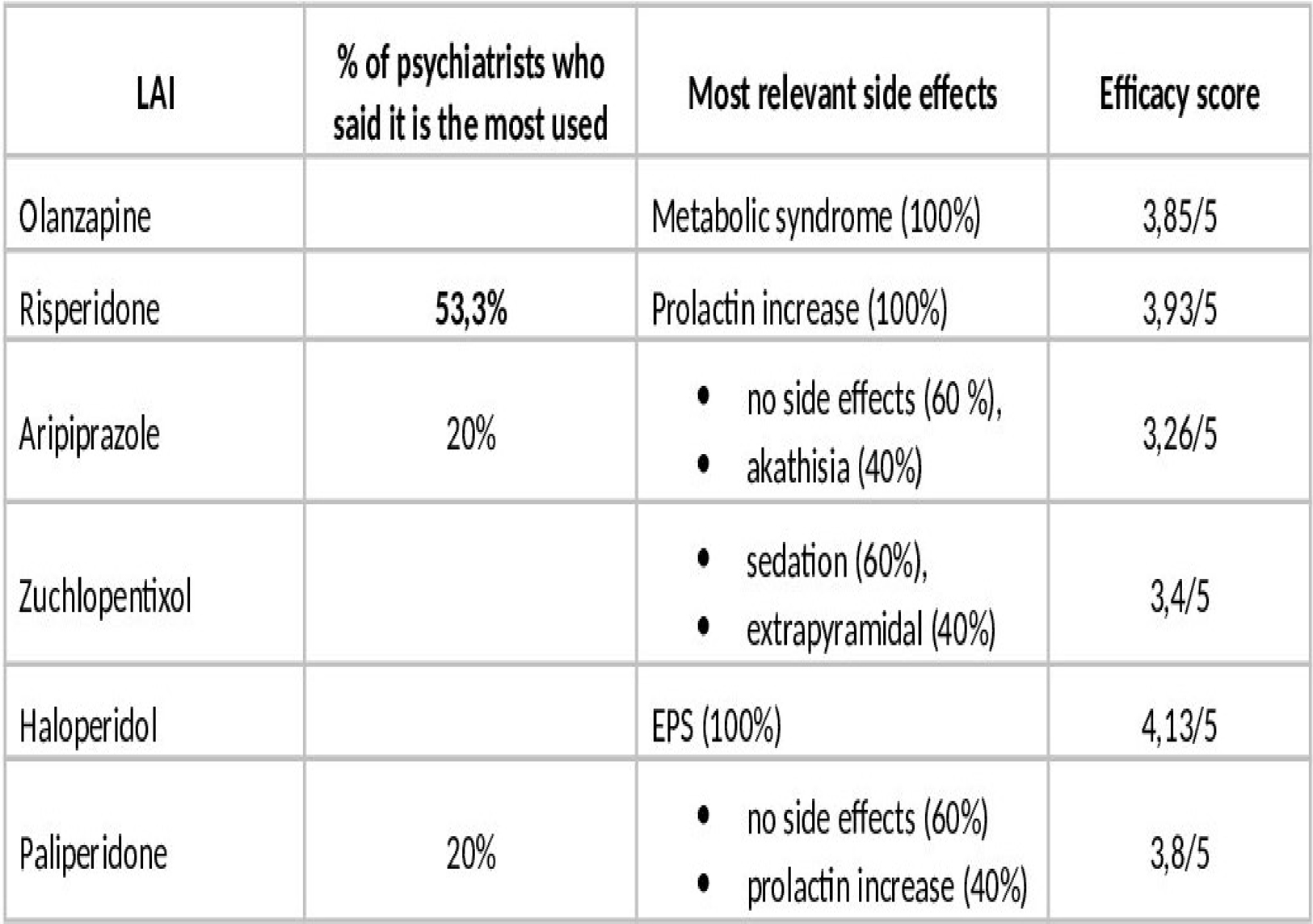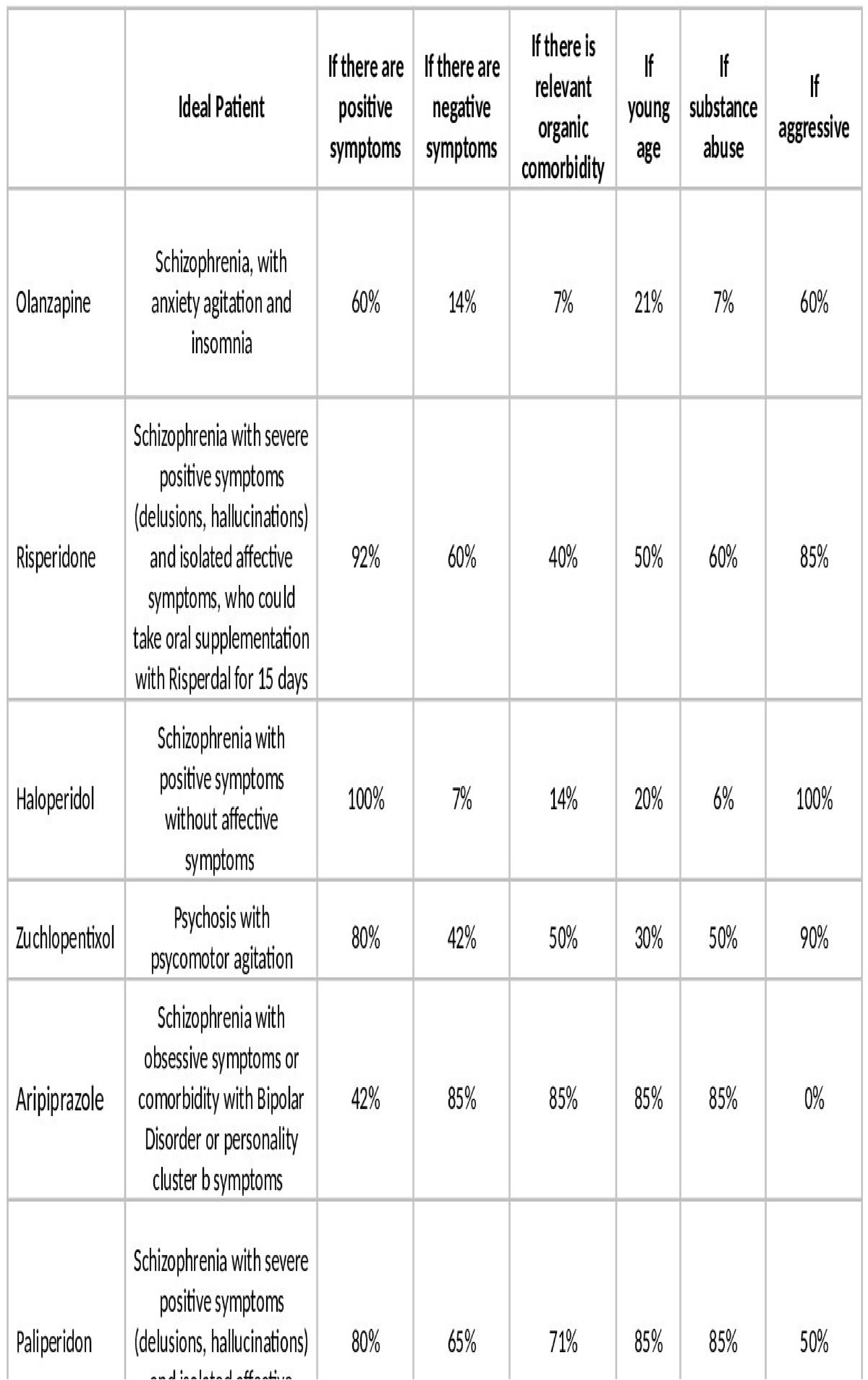No CrossRef data available.
Published online by Cambridge University Press: 23 March 2020
Long-acting anti-psychotic drugs (LAI) are increasingly used in clinical practice, owing to their ability to improve adherence.
To understand the variables that inform treatment choice, within the LAI anti-psychotics, in the daily clinical practice.
Fifteen attending psychiatrists from the university clinic of Siena and the community mental health service USL 7 Siena and Val d’Elsa were asked to answer a questionnaire comprising 4 questions, and asking for their clinical experience regarding olanzapine, risperidone, haloperidol, zuchlopentixol, paliperidone and aripiprazole LAISs.
In particular, they were asked to indicate:
– which LAI has been their mostly used;
– what have been the most relevant side effects;
– an efficacy score ranging from 0 to 5;
– who the ideal patient for each of these medications could be.
The answers were statistically assessed and the final results described as a percentage of the total.
The results are shown by the Tables 1 and 2.
LAI are still heterogeneously used in the daily clinical practice: their actual use depends on the individual experience with a specific drug as well as on their costs and the availability of resources within the medical service. The most used LAI resulted to be risperidone, although haloperidol LAI is still considered to be the most effective one. Those psychiatrists interviewed had an overall good opinion about the most recent LAI such as paliperidone and aripiprazole. This is due to their good tolerability, which allows them to be administered more safely to the youngest, in order to preserve their good functioning.
Table 1
Table 2
The authors have not supplied their declaration of competing interest.
Comments
No Comments have been published for this article.